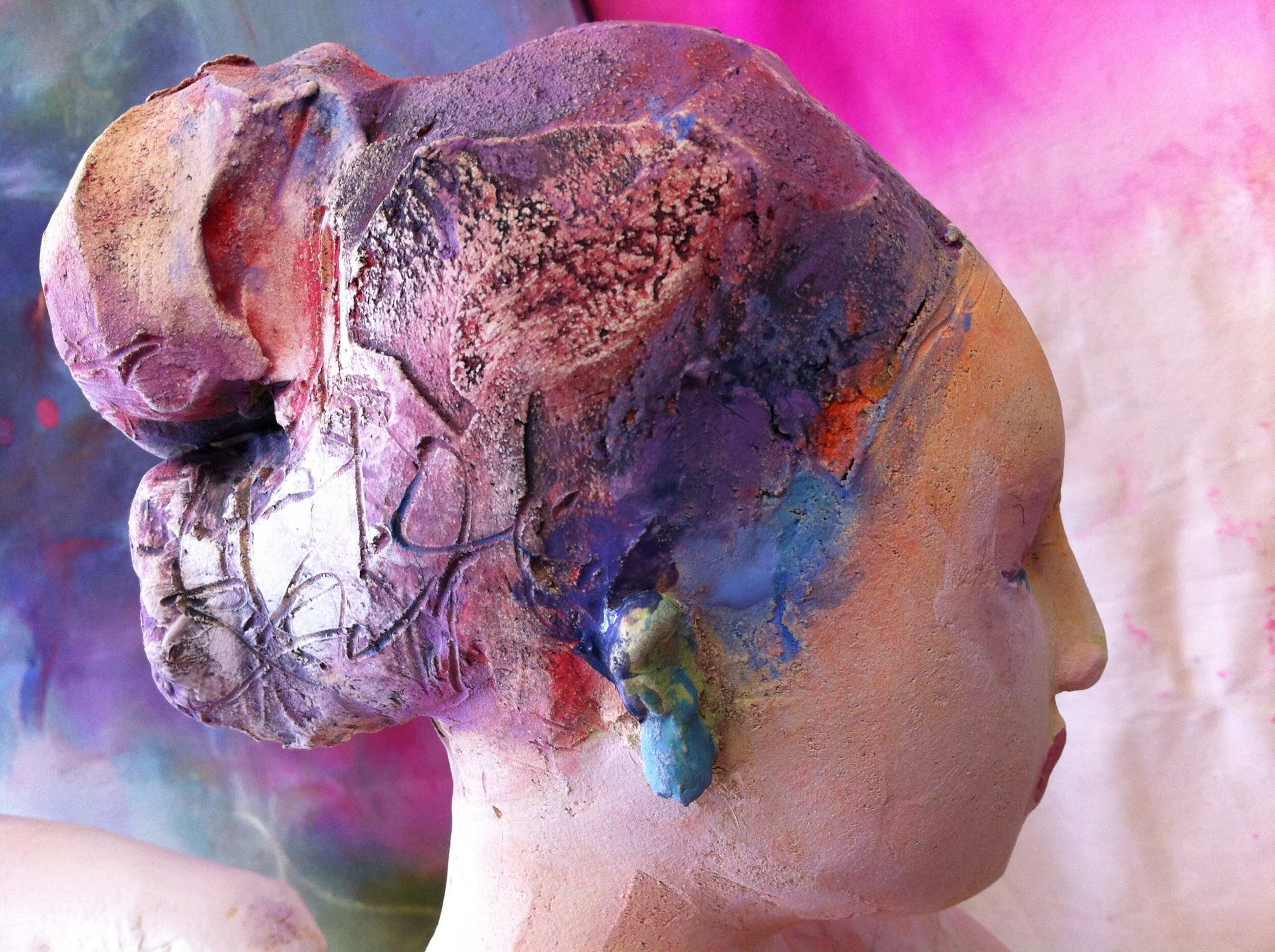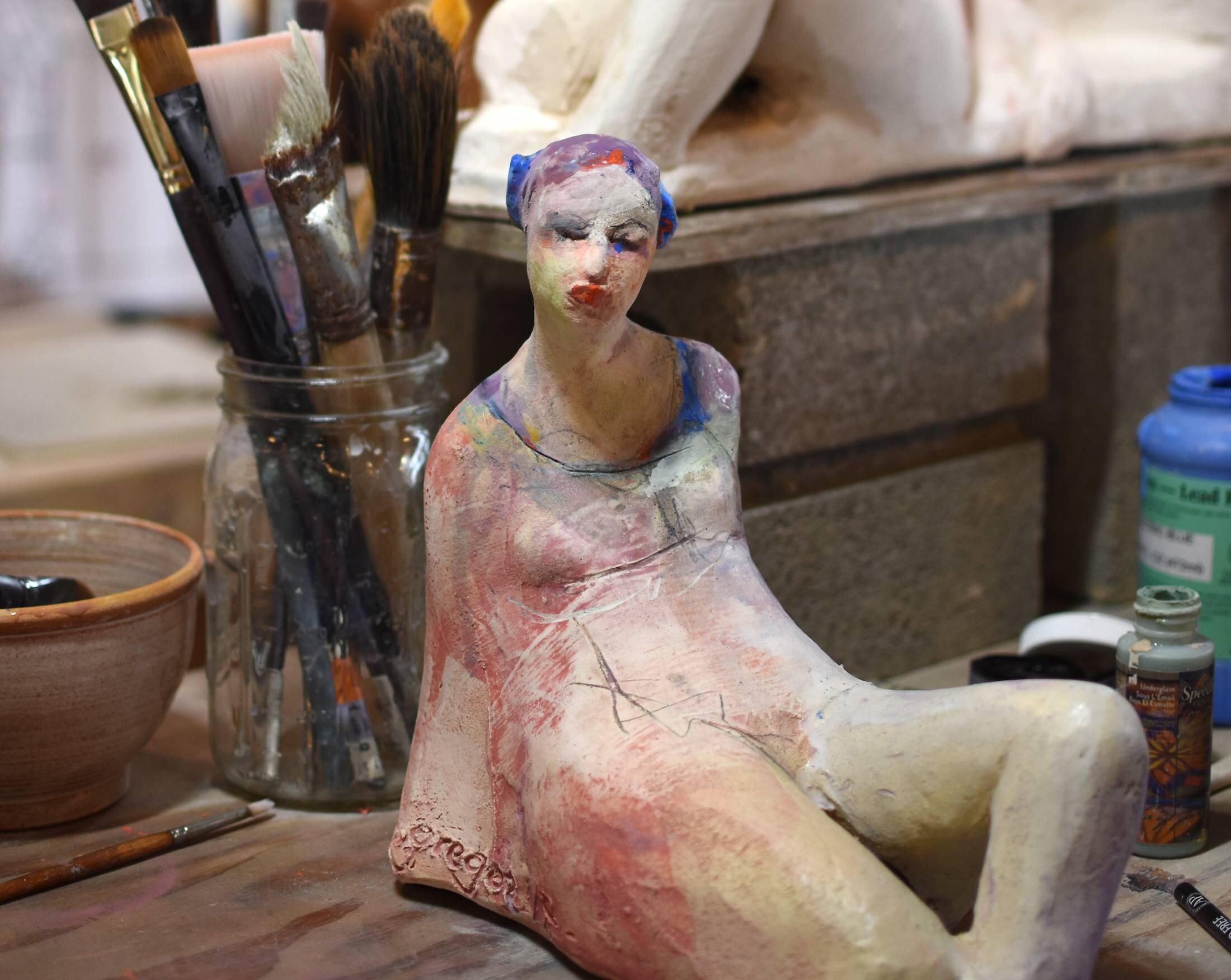
Form and surface.
“Sculpture is a tributary that runs deeply through the great creative current. To practice this art form is to be deeply humbled by its treasures, exquisite and remarkable. The transient state of our existence is the muse.”

THEMES
-
Q.
What themes do you pursue?
-
A:
Themes of pursuit are both figurative and abstract. The figure provides a vehicle to explore form, shape, texture, color and space. I will never tire of it! Abstraction has limitless potential to describe emotional and spiritual states. Together the two themes encompass our human existence. My work explores what it is to be inside our human containers.
“Gregor’s use of abstraction in the figure goes beyond anything that classical sculptors have done, but elements of basic abstraction, like that of Henry Moore, does come into play.”
"Michelle Gregor: Seeking Resonance", Forward. Michelle Gregor, 2018

FORM
-
Q.
How do you approach your work? Where do you begin?
-
A:
I use a solid building technique now. I start by cutting blocks of clay and massing up. I work with large segments of the form. Often I’ll start from the torso. I try and get the gesture of the pose. Slice it, shift it around. And I like to have three or four or five pieces going at once. So a group or a family of forms in a series develops naturally.
“Gregor’s virtuoso skill resides in the tension she creates between the solidity of the material and the lightness of the form.”
Damn Fine Art by New Lesbian Artists. Cassell, 1996

COLOR
-
Q.
How do you work with color?
-
A:
I like working with water as a medium for color both in fired clay work and on canvas and paper. It pools, drips, follows contour, dries slowly and has a beautiful life of its own.
“Gregor emerged early on as a particularly fine colorist … Her figures wear colors as subtle and sophisticated as an oil painting … Calculated to a nicety, she layers raw glaze, so delicately positioned that it melts and flows, to create the convincing illusion of a silk garment over skin.”

MARKS
-
Q.
What are you trying to say with your surfaces?
-
A:
I want to develop a patina on the surface that shows the depth and the passage of time.
“Gregor, a self-taught colorist, describes the process as a conversation with the surface through mark-making. Paintings tacked to the wall of her studio—described by Gregor as research—show the same kind of free-spirited give and take with color and gesture, and create a kind of theatrical backdrop for her figures. ”

INSPIRATION
-
Q.
What inspires you? Other artists, other women from history, your process, a theme?
-
A:
Inspiration comes in so many forms; a poem by Mary Oliver, a canvas by Joan Mitchell, a story by Haruki Murakami… I am deeply inspired by artists of all kinds.
“I love Greek sculpture. The vitality. Even missing arms and heads they could just stand up and move. The Victory of Samothrace. Anything by Rodin. For his figures’ power and vitality. I love that they are not accurate. I love Stephen De Stabler’s work, Manuel Neri, Cy Twombly. So many... Richard Deibenkorn is my favorite.”





